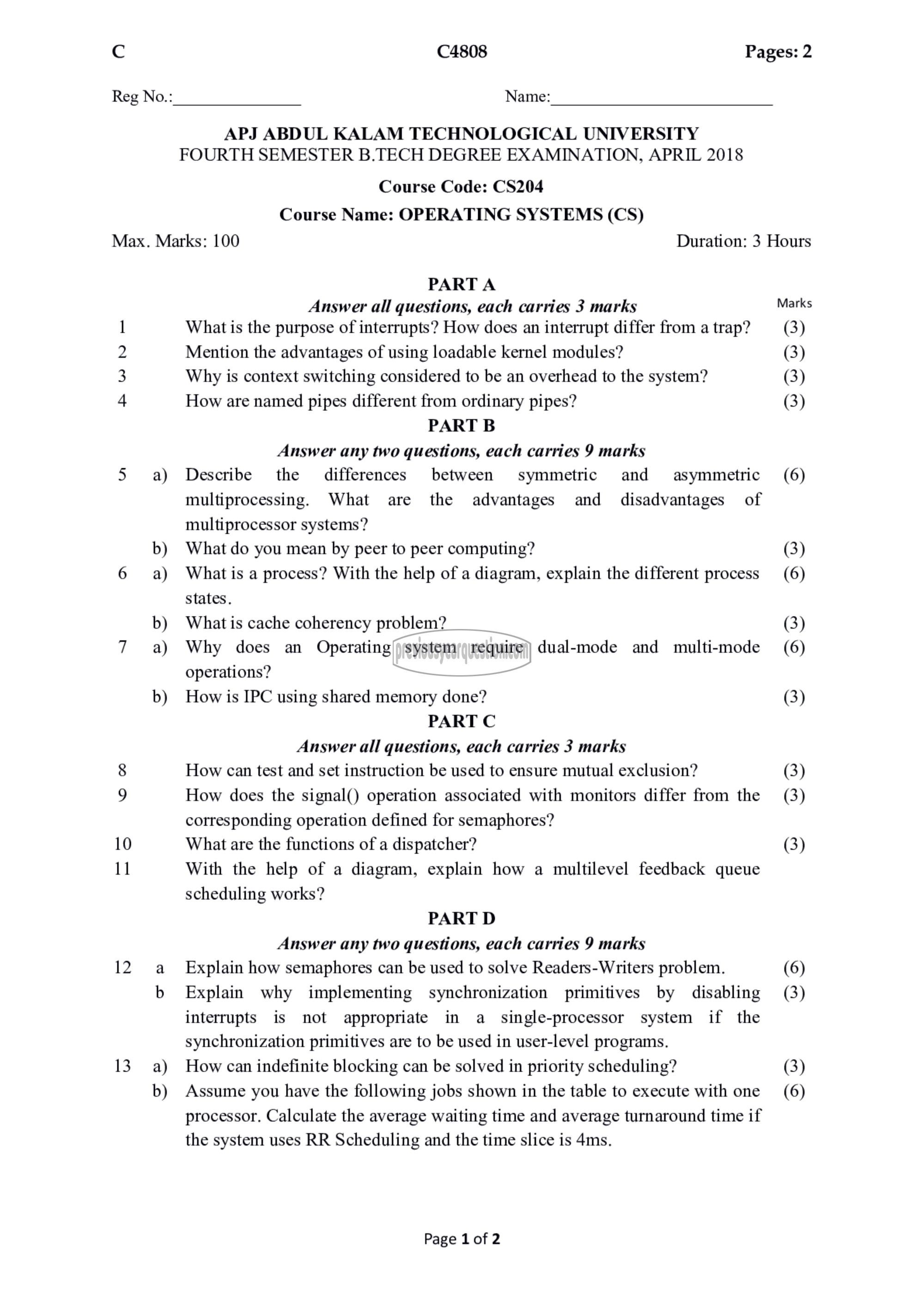APJ ABDUL KALAM TECHNOLOGICAL UNIVERSITY Previous Years Question Paper & Answer
Semester : SEMESTER 4
Subject : Operating Systems
Year : 2018
Term : APRIL
Branch : COMPUTER SCIENCE AND ENGINEERING
Scheme : 2015 Full Time
Course Code : CS 204
Page:1
(0
Reg No.:
Max. Marks: 100
نے وم نیا >+
12
13
b)
C4808 Pages: 2
Name:
APJ ABDUL KALAM TECHNOLOGICAL UNIVERSITY
FOURTH SEMESTER B.TECH DEGREE EXAMINATION, APRIL 2018
Course Code: CS204
Course Name: OPERATING SYSTEMS (CS)
PART A
Answer all questions, each carries 3 marks
What is the purpose of interrupts? How does an interrupt differ from a trap?
Mention the advantages of using loadable kernel modules?
Why is context switching considered to be an overhead to the system?
How are named pipes different from ordinary pipes?
PART B
Answer any two questions, each carries 9 marks
Describe the differences between symmetric and asymmetric
multiprocessing. What are the advantages and disadvantages of
multiprocessor systems?
What do you mean by peer to peer computing?
What is a process? With the help of a diagram, explain the different process
states.
What is cache coherency problem?
Why does an Operating system require dual-mode and multi-mode
operations?
How is IPC using shared memory done?
PART C
Answer all questions, each carries 3 marks
How can test and set instruction be used to ensure mutual exclusion?
How does the signal() operation associated with monitors differ from the
corresponding operation defined for semaphores?
What are the functions of a dispatcher?
With the help of a diagram, explain how a multilevel feedback queue
scheduling works?
PART D
Answer any two questions, each carries 9 marks
Explain how semaphores can be used to solve Readers-Writers problem.
Explain why implementing synchronization primitives by disabling
interrupts is not appropriate in a single-processor system if the
synchronization primitives are to be used in user-level programs.
How can indefinite blocking can be solved in priority scheduling?
Assume you have the following jobs shown in the table to execute with one
processor. Calculate the average waiting time and average turnaround time if
the system uses RR Scheduling and the time slice is 4ms.
Page 1 of 2
Duration: 3 Hours
Marks
(3)
(3)
(3)
(3)
(6)
(3)
(6)
(3)
(6)
(3)
(3)
(3)
(3)
(6)
(3)
(3)
(6)
